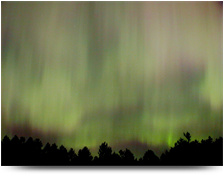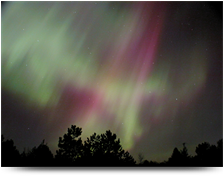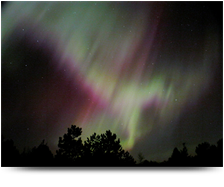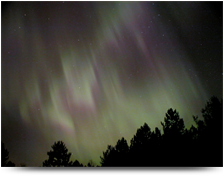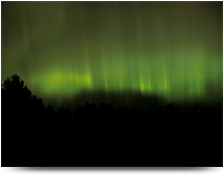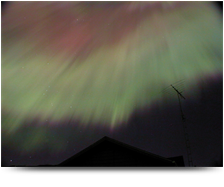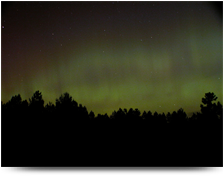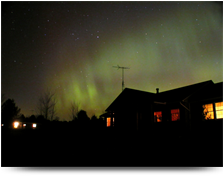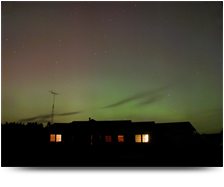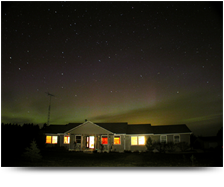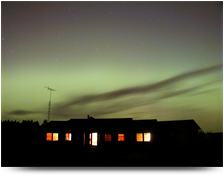
Black River Observatory
Galaxies
Nebula
Solar System
SkyCam
Aurora
Aurora
Now and then the sun ejects some of it's matter into space. Such an event is known as a Coronal Mass Ejection (CME). If Earth happens to be in the way, the particles interact with our atmosphere and creates a light show know as an aurora. These aurora are more common near the Earth's poles but are occationally seen at much lower latitudes.

I haven't seen a diplay like the one in '04 here in lower Michigan since the late '70s. Another great but very short display occured on 10-24-11 but my Nikon batteries were dead. However, I did manage to capture them using my SkyCam, but they are in Black & White. See the SkyCam page for those images.






